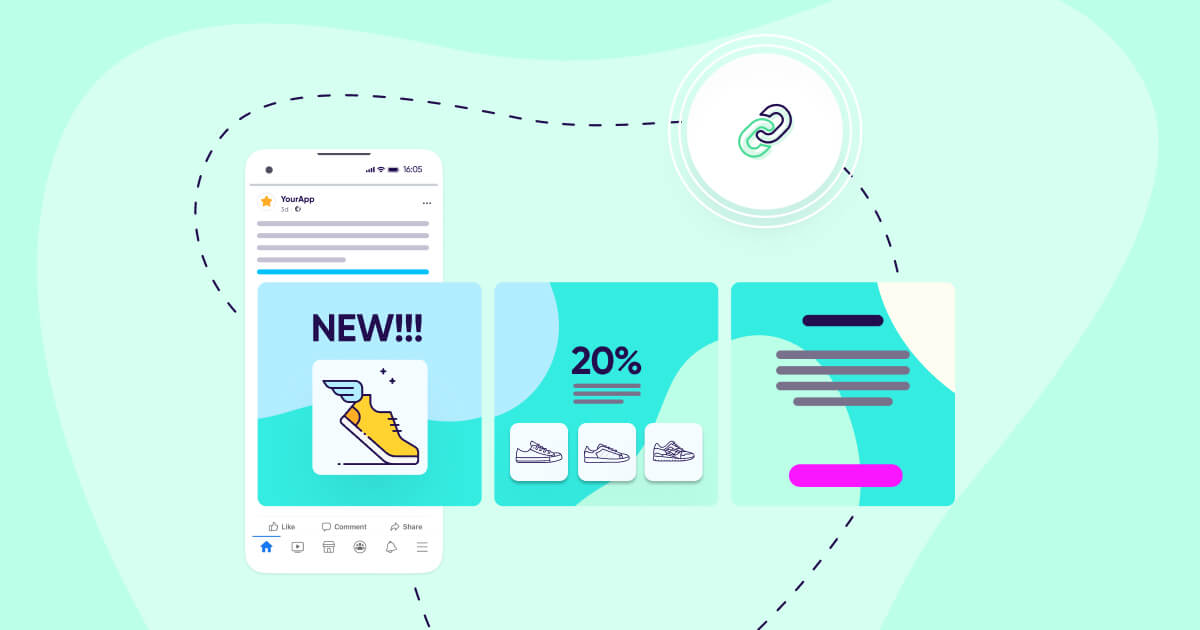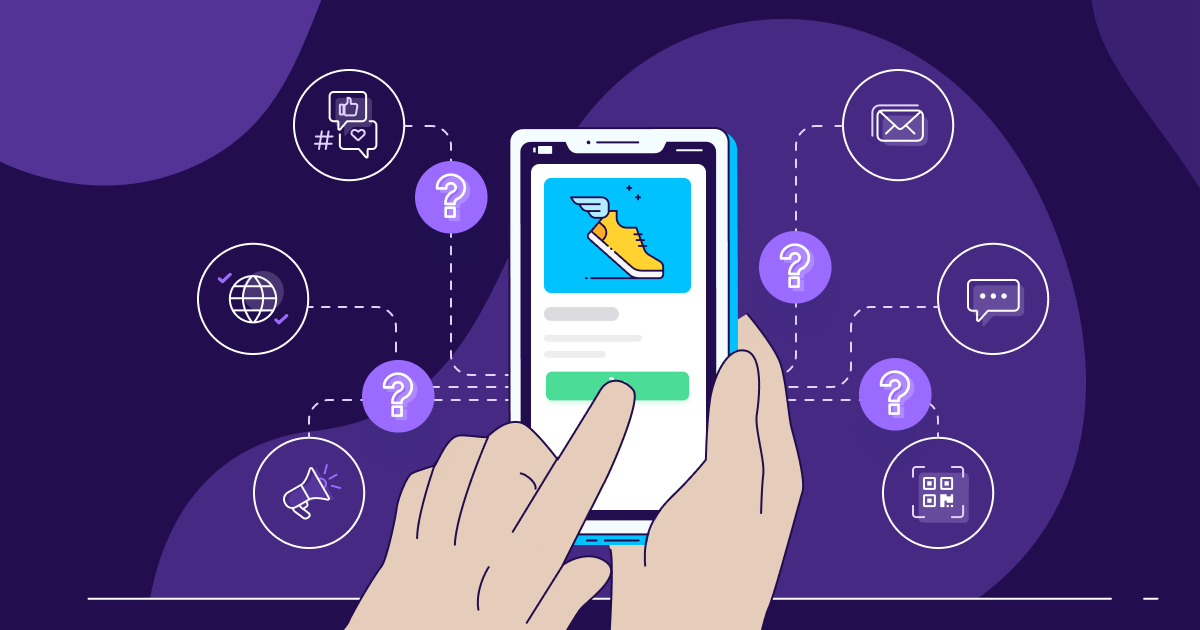
The mobile return on experience opportunity in shopping
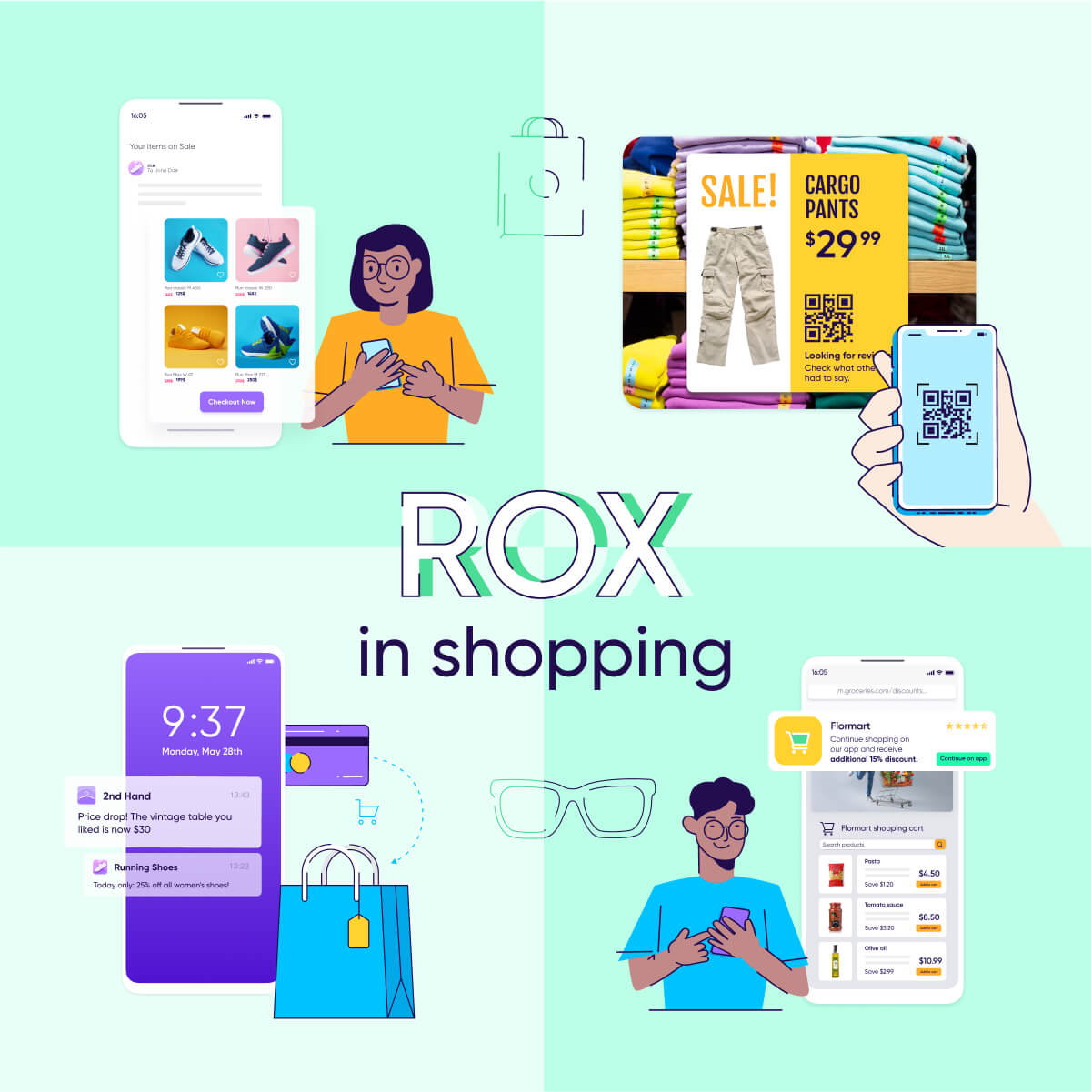

All right, folks. The results are in and we have a winner: mobile commerce.
As our recent report with Adobe clearly demonstrates, mobile web and app channels have become integral elements of the customer lifecycle, with more than 40% of all customers defining themselves as “mobile-only”.
As for apps, thanks to the pandemic and the need to replace physical with digital shopping, they’re now considered critical to success in retail. Retailers have taken note, with the majority intending to:
- Include more than 75% of their functionality in their app.
- Drive over 67% of customers to become app users.
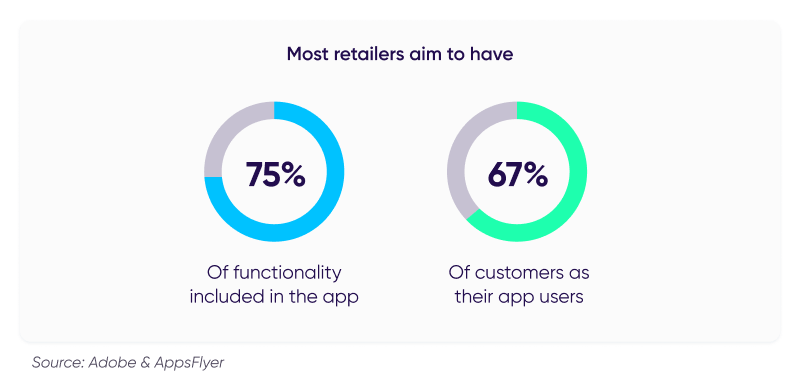
With the ascendance of app commerce, shopping brands now have to ensure optimal customer experience (CX) from any channel – digital or offline – to the app. A minority of retailers has already doubled down on app CX, and, per App Annie (eMarketer, 2021), they’ve realized a return on their experience, also known as ROX.
So as we roll into the twenties, two things are becoming clear: app CX is hitting its stride in shopping, and the ROX proposition will continue to pay dividends for those committed to app CX.
Industry trends: It’s all about the shopping experience
Heading into 2022, cross-channel CX optimization is top of mind not only for established brands navigating through digital transformation, but also for newer ecommerce players. Six industry trends validate the importance of CX, in general, and mobile CX, in particular1:
- CX investment does drive business impact: Retailers investing in CX report significantly improved metrics across the customer lifetime journey. In fact, retailers investing seriously in CX are four and three times more likely to beat out CX laggards in basket size and LTV, respectively. (eMarketer, 2021)
- Customers expect seamless, contextual experiences: Customers view the world as all-digital, with no divide, and nearly 75% of consumers now describe themselves as channel agnostic (Google, 2021). Consumers expect digital experiences to be contextual, spanning touchpoints in their customer journey.
- Personalization is now a must: Personalized experiences are shifting from being a nice-to-have to becoming a necessity. One recent survey shows that 63% of US internet users would like to receive personalized offers based on their past purchases.
In fact, it appears customers are willing to provide personal data if they receive something of equal value in return. (eMarketer, 2021)
- First-party data becomes critical: In the US, 42% of positions that utilize data will spend more on tapping into first party data in the coming year (Interactive Advertising Bureau, 2021).
Marketers know that first-party data enables personalization and contextualization, and can mitigate the effects of recently introduced privacy initiatives. More specifically, data from apps enables marketers to learn about customer preferences and create long-term relationships based on value.
- App commerce to grow by leaps and bounds: The pandemic, combined with more seamless buying options and people’s growing appetite for instant gratification, pushed mobile and app commerce forward by years, especially for grocery and food delivery.
Apps are instrumental to revenue growth: compared to non-app customers of the same brand, app users spend 37% more, buy 33% more frequently, and purchase 34% more items (Google, 2021).
- Investments spike for in-app experiences: Forward-looking retailers are focused on improving in-app experiences, especially popular features like click-and-collect.
App Annie research points to a tight connection between total sales (including in-store sales) and time spent in retail apps, suggesting that retailers investing in in-app experience are rewarded accordingly.
Delivering on ROX with smooth journeys to your app
The above trends indicate that retailers should invest in CX and drive consumers to their apps from any touchpoint. They should work on crafting seamless journeys to the app and of course delight users in the app itself.
Doing so results in ROX, a measurement framework that informs many of our customers regarding the business impact generated by their CX investments.
Our retail customers hit their ROX goals by bringing users to their app from anywhere – digital channels such as social media, email, a mobile website or physical channels such as in-store displays – and creating experiences that are:
- Contextual: Users sense where they are and where they’re going at any point in their journey.
- Personal: Users feel like they are getting an experience built uniquely for them.
- Smooth: Users are ushered through seamless journeys without recognizing they’ve been taken through more than one touchpoint.
- Private: Users can choose what personal data they want to share and which details to keep private.
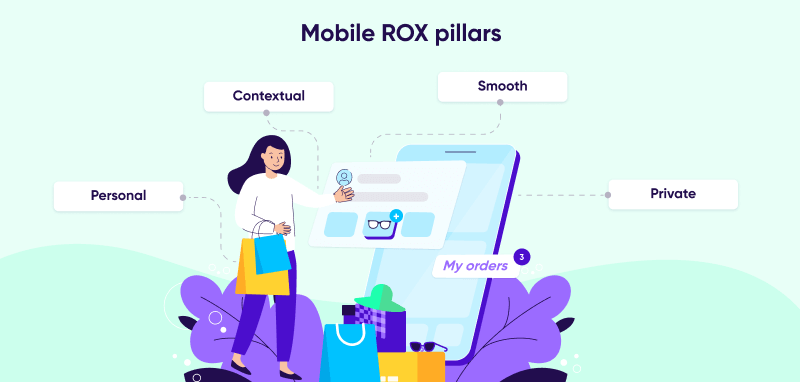
At this point, you may be asking: this sounds good, but what is the actual business impact of creating journeys with these four pillars? AppsFlyer data shows that retail brands that invest in CX demonstrate excellent conversion and share of paying users rates:
- 36% of consumers that capture a QR code and 33% of users clicking on a web banner went on to download the retailer’s app.
- When retailers run remarketing campaigns to existing app users, 15% arriving from an email and 14% arriving from a text message went on to re-engage (re-installed, clicked through, etc.).
Business results will vary, but retailers with sharp marketing teams shine when it comes to driving ROX.
Take the example of a large grocery brand which created and displayed a web-to-app banner on its mobile website. The banner drove 188,000 installs and about $2 million in incremental in-app revenue in the first six weeks of the campaign.
Rolling out ROX in retail: Use cases
At AppsFlyer, we’ve witnessed firsthand how retailers create delightful experiences and reap ROX by putting the four pillars into practice.
Below are examples that tackle common industry challenges and provide opportunities to hit growth and retention KPIs:
A. Ecommerce: Cart abandonment (Email)
Cart abandonment is a huge problem for retailers. After browsing, shopping, and filling their cart, users decide not to complete their purchase for one reason or another.
A proven way to reach customers who have left their shopping cart full of goods is to proactively send them emails. Cart abandonment emails have high open and click through rates, about 45% and 21%, respectively. More to the point, relevant, contextual emails can recover about 1% of potential lost revenue. (Sitecore)
In the example below, a fashion retailer set up an automated process that sends emails to customers who have left goods in their carts. The marketer uses a deep linking solution to ensure that a user is brought in a direct, smooth way to the shopping cart, which is conveniently already populated with the items that were left in the cart.
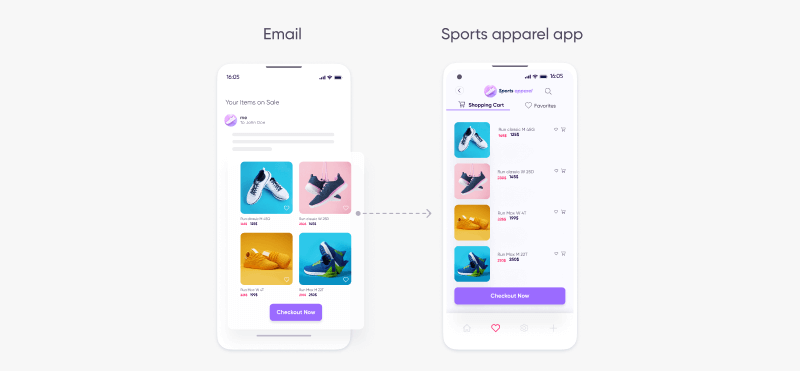
B. Retail store: In-store conversion (QR codes)
QR codes are popping up everywhere. Their popularity is always on the rise, and as brands realize their value, many are leveraging QR codes to achieve their business goals.
Traditional retailers can take advantage of in-store shopping to drive purchases, as well as migrate customers to their app by displaying QR codes in a way that feels natural and helpful to shoppers.
Below is an example of a clothing retailer using QR codes to drive in-store purchases. The retailer is looking to address a common hurdle faced by in-store customers: the need for more information about the product they’re interested in buying.
At home, shoppers can search online for reviews and user-generated content to help their shopping journey. But at a physical store, a lack of information can lead to a decision to forego the purchase.
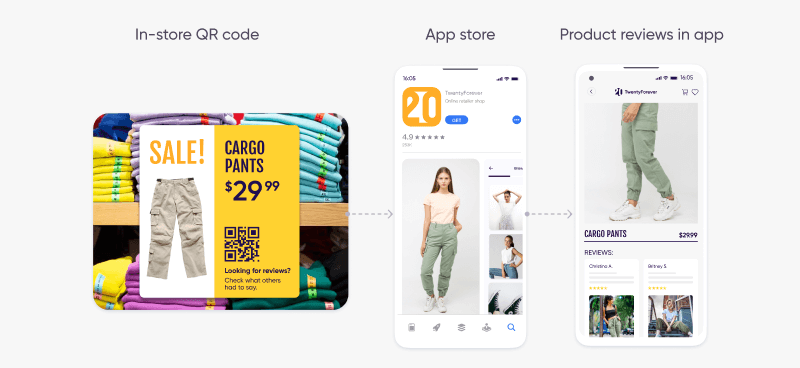
To provide instant access to the relevant information, the brand places dedicated QR codes next to each product and uses a deep linking engine to redirect users to reviews in the right channel (either web or app).
Customers with the app are sent to the right in-app page showing reviews, while users without the app are redirected to the mobile web page with the reviews.
To drive app adoption by the latter group of web users, the retailer displays a banner with a discount incentivizing the shopper to download the app.
By creating contextual, smooth journeys that begin with QR code scans, retailers can provide excellent shopping experiences. And great customer experience leads to ROX through building trust with customers and increasing their in-store conversion.
Users that scan QR codes typically have high intent – after all, the customer is shopping and wants to learn more about a product before making a purchase. So it’s no wonder that click-to-install rates for QR codes are at 33%.
C. Groceries: Migration to app (web banners)
As the data shows, increasing numbers of shoppers head to the mobile web to learn about products and services.
Retailers can incentivize these high-intent shoppers to further improve their digital experience by using their app, and in this case, a smooth, friction-free migration process is critical to future loyalty.
In the example below, a grocery brand displays an easy-to-deploy banner that promotes the app and incentivizes users to download the app with a discount.
After the user installs and opens the app, they continue shopping in a contextual way, since all the goods they had in their shopping cart on the website are already in their in-app shopping cart. And, of course, the discount is applied at checkout. What shopper wouldn’t be delighted with an experience like this one?
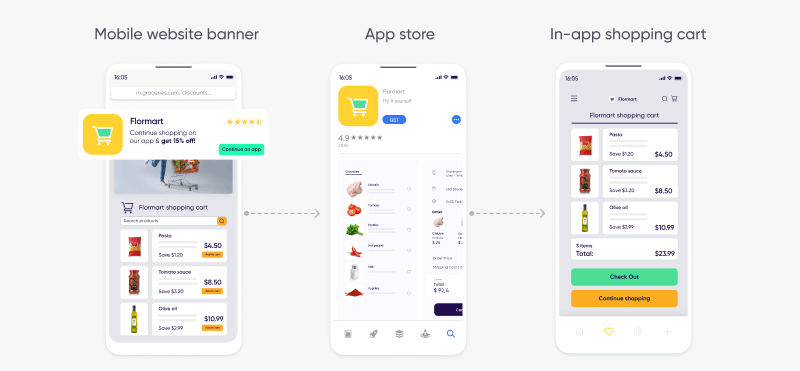
Crafting smooth, contextual web-to-app journeys is a proven way to increase conversions and LTV, and retailers leveraging banners see a high 27% click-to-install conversion rate.
Along with QR codes and SMS campaigns, web banners are extremely effective at helping retailers achieve ROX and their growth KPIs.
Want to learn more about implementing ROX?
You should now have a better understanding of how mobile-first retailers are crafting awesome customer experiences that lead to app growth and usage and ultimately to ROX. Reach out if you’d like us to help you drive ROX in your business.
1 . Industry trends are based on AppsFlyer data and these sources: eMarketer, Mcommerce Forecast 2021, 2021; eMarketer, Ecommerce and Retail Customer Experience 2021, 2021; Google, New Customer Experiences, 2021, Forrester, Predictions 2022, 2021.



